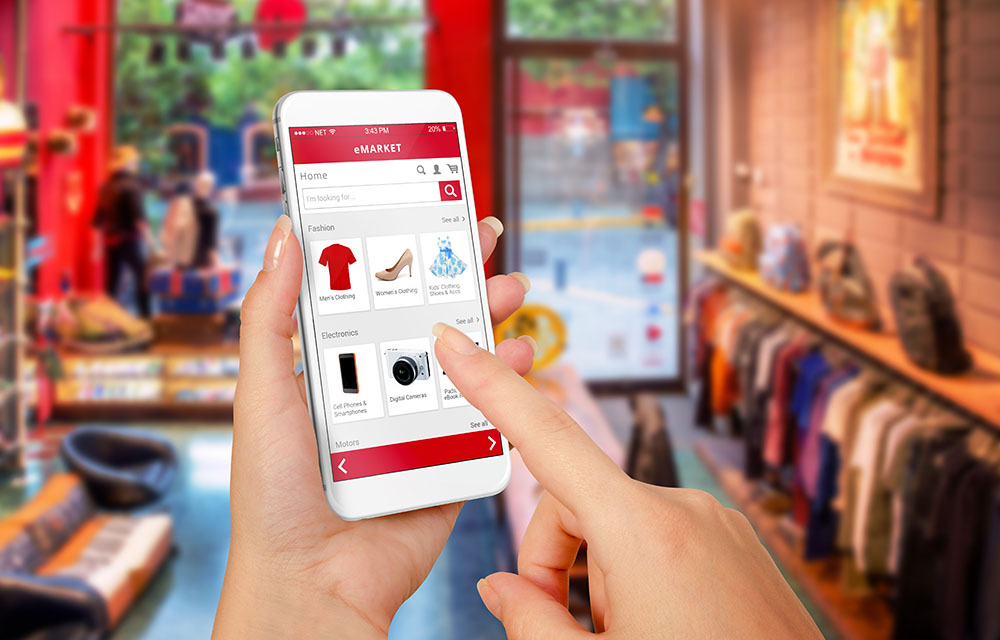Retailers and the new digital expectaction

Retailers are scrambling to keep up with consumer’s digital expectations, and those that keep pace in the right way are likely to be rewarded handsomely for their efforts, according to a new report.
Here’s an insight into the role of digital in real-world retail and the key features consumers seek.
The value of digital
A new report by Boston Retail Partners has found 75% of bricks and mortar store visits are influenced by digital technology with 50% of consumers leveraging mobile devices in store.
They further found leveraging digital technology in the right way had the potential to increase revenue by 25%, but many retailers have failed to execute their digital strategy in the areas that consumers expect.
What consumers do
Convenience is the key driver when it comes to how shoppers use digital to improve the retail experience.
“Consumers expect greater convenience and empowerment to shop the way they want, where they want,” Boston Retail noted.
“Digital sits at the core of that promise. It’s no surprise that most consumers research prices, reviews and product information before they set foot into a store.”
The report found even before they entered a store, shoppers were heading online to:
- 76% Compare prices
- 62% Look at reviews
- 47% Check local store inventory
Within store around half of consumers were also looking online, using their mobile devices to:
- 83% Compare prices
- 78% Look at reviews
- 76% Check local store inventory
The gap between expectation and offering
The report goes on to explain often retailers had failed to keep pace with these expectations and activities.
While 76% of consumers expected to be able to compare prices, only 36% of retailers supported this activity. While 47% of consumers wanted to check local store inventory and product availability, only 23% of retailers offered this feature, and while 38% of shoppers wanted to purchase online then pick-up in-store, only 28% of retailers met this demand.
In other areas, retailers had over-invested in digital, offering services consumers had little desire to use. For example, 78% of retailers offered a feature that allowed shoppers to find their nearest local store, yet only 40% of shoppers used it.
60% of retailers provided the ability to build an online shopping list, yet only 41% of shoppers accessed this feature, and 42% of retailers shared details about their products on social media, yet only 9% of consumers sought this information.
The customer experience – what customers want
With the customer experience driving digital, shoppers also had their own list of services they wish to see provided, many of which are being under-delivered by retail. The report found:
- 71% of shoppers wanted to use self-service checkouts
(42% of retailers have deployed that feature)
- 59% of shoppers wished to access Wi-Fi in-store
(47% of retailers offer Wi-Fi)
- 52% of customers wanted to receive receipts by email/text
(43% of store offer that service)
- 51% of shoppers would like access to in-store interactive kiosks
(42% of retailers have kiosks in-store)
- 50% of consumers would like to pay by digital wallet or credit card on a mobile app
(42% of stores offer this feature)
- 43% of customers would like to see mobile Point of Sale used by store associates
(33% of retailers feature this service)
- 41% of shoppers would like to use contact-less payments
(43% of store offer this)
- 37% of customers value digital signage
(47% of stores employ digital signage)
“Consumers want speed and convenience in their shopping journey and in-store digital can play a huge role in meeting those expectations. Consumers value technologies that help them shop and pay at their pace and in the context of their lifestyles,” the report noted.
Incoming tech
Meanwhile, a series of further features were found to make consumers more likely to shop instore, the most important of which were automated returns.
The report found 68% of shoppers would be more likely to shop at a retailer if they offered automated returns, 65% would be more likely if the retailer had proximity triggered mobile coupons and 53% would value smart fitting rooms.
Other features consumers valued included augmented reality (48%), virtual reality (46%) and facial recognition (41%).
The report highlights the importance of digital in context of the complete retail experience. While consumers seek digital technology to enhance their shopping experience, core retail values of customer service, product availability and staff knowledge continue to play a critical role.
“The store remains the core center of commerce and brand equity,” Boston Retail noted.
“Retailers must reinvent their definition of the store and leverage the latest technologies to meet the expectations of today’s consumer.”